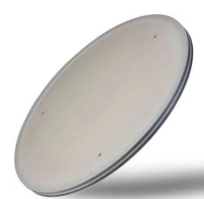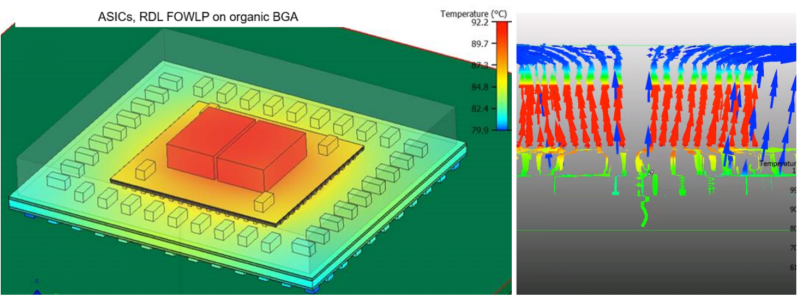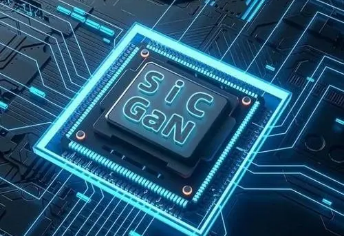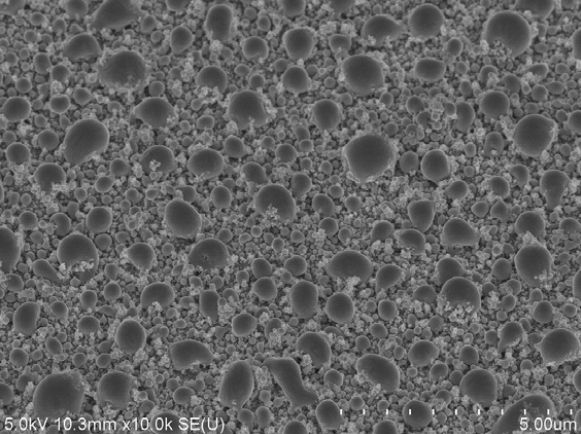Ceramic parts & Quartz Parts & perfluorinated Seals & Electrostatic chuck....
The lag in the development of semiconductor precision parts is mainly due to the complex semiconductor key parts process, high precision requirements, long certification cycle, most foreign leaders have formed a high barrier to entry after years of accumulation, and the domestic general parts industry layout has been missing for a long time, on the other hand, various types of parts, relatively small batch, special size, etc. The market segment size is scattered, the market demand space has a ceiling, the initial relying on the advance development of the equipment industry, the long-term lack of capital attention and pursuit, it is expected that the "specialized and special new" small and medium-sized enterprises listing channel will help the manufacturers of segmented products get considerable development, CVC (Corporate capital) and the development of international markets will also become an important way for parts companies to amplify their advantages.
The following discusses the situation of the former dry process equipment parts industry from the overall market and specific categories, and lists some of the material parts industry with a low localization rate or a relatively high consumption.
Semiconductor parts market size
Semiconductor parts are first divided into two categories: 1. Precision machine parts and 2. General purchased parts. 1. Precision machine accessories are usually designed by the various semiconductor equipment companies, and then outsourced processing, only for the company's equipment, such as process chambers, transmission chambers, etc., localization is relatively easy, and the surface treatment, precision machining and other technology requirements are higher. 2. General purchased parts are some general parts that have been verified for a long time and are widely recognized by many equipment factories and manufacturers. They are more standardized and will be used by different equipment companies, and will also be used as spare parts and consumables on the production line. For example, silicon structural parts, O-Ring seals, valves, gauges, pumps, Face plates, gas spray heads, Shower heads, etc., such parts have strong versatility and consistency, and need to be certified by the equipment and manufacturing line.
As the main component of semiconductor equipment, components, together with semiconductor materials and EDA software, support the design, manufacturing, sealing and testing links in the semiconductor industry chain, thus supporting the digital process of the global economy. Semiconductor core components, like semiconductor raw materials, although the market size is small, it determines the core composition, main cost, and high-quality performance of semiconductor equipment. In 2020, the global semiconductor core parts market size is about $20-30 billion, and the semiconductor equipment market size is about $80-90 billion; Semiconductor equipment and semiconductor materials, EDA together support the global semiconductor chip and application industry scale of about 500 billion US dollars.
Semiconductor parts Industry Overview
We divide the semiconductor front-end devices into three broad categories:
(1) Optical equipment, mainly including lithography machines and measurement/detection equipment,
(2) dry process equipment, mainly including etching machine, PVD, CVD, ion implantation machine, etc.
(3) wet process equipment, mainly including cleaning equipment, glue development equipment and CMP equipment.
The categories of semiconductor components and the equipment used in them correspond to the following:
Parts enterprises, according to the main materials and functions of semiconductor parts are divided into twelve categories, including
- Silicon/silicon carbide parts,
- Quartz parts,
- Ceramic parts,
- Metal parts,
- Graphite parts,
- Plastic parts,
- Vacuum parts,
- Seals,
- Filter parts,
- Moving parts,
- Electric control parts
- Other parts.
Each of these parts also includes a number of sub-products, such as vacuum parts, including vacuum gauge (measuring process vacuum), vacuum pressure gauge, gas flow meter (MFC), vacuum valve parts, vacuum pumps and other key parts.
Material parts with low localization rate
Semiconductor manufacturing equipment requires precision component materials with light weight, high strength, high thermal conductivity and low thermal expansion coefficient, and dense uniform without defects. In addition to materials, structure, process and quality, semiconductor parts also have high requirements for precision, reliability and stability, so localization is difficult.
Ceramic parts
1). Main materials of semiconductor ceramic components and consumables
Precision ceramic parts The most representative semiconductor precision parts materials. Precision ceramics account for about 16% of the value of semiconductor equipment manufacturing. Semiconductor ceramics are alumina, silicon nitride, aluminum nitride, silicon carbide and so on. Compared with organic and metallic materials, ceramic materials generally have better physical and chemical corrosion resistance and high working temperature, and have become the core components of semiconductor monocrystalline silicon wafer manufacturing process and previous processing process. Ceramic has high hardness, high elastic modulus, high wear resistance, high insulation, corrosion resistance, low expansion and other advantages, can be used as silicon polishing machine, epitaxial/oxidation/diffusion and other heat treatment equipment, lithography machine, deposition equipment, semiconductor etching equipment, ion implantation machine and other equipment parts.
(1)Al₂O₃
(2) SiC
(3) AIN

(4) Si3N4
2). Market pattern of precision ceramic parts
At present, foreign companies are at the forefront of the research and development and application of precision ceramic structural parts for integrated circuit core equipment in Japan, CoorsTek in the United States, Berlinerglas in Germany, etc., among which, Kyocera in Japan and CoorsTek in the United States occupy 70% of the market share of high-end precision ceramic structural parts for integrated circuit core equipment.
Quartzware
Semiconductor quartz glass industry
Quartz glass is an important auxiliary material in semiconductor industry, widely used in semiconductor manufacturing photomask, diffusion, etching and other links, is one of the key raw materials in semiconductor industry. Quartz has high temperature resistance, small thermal expansion coefficient, excellent light transmission, good electrical insulation, corrosion resistance and other superior performance, the downstream demand is widely involved in the low-end light source industry (4%), photovoltaic industry (7%), as well as high-end optics (10%), optical fiber (14%) and semiconductor (65%) and other technical threshold of higher fields.
Perfluorinated sealing ring
Perfluorinated sealing ring is one of the five main consumables required for the production of integrated circuits, and the current domestic self-sufficiency rate is less than 1%. In the semiconductor production process, fluorine and hydrogen gases often encounter high temperature. If there is no sealing ring, the high energy gas flow contacts the surface of the modified material, which will cause strong corrosion on the surface of the material.
Electrostatic Chuck
Electrostatic chuck is a kind of ultra-clean wafer carrier suitable for vacuum environment or plasma environment. It uses the principle of electrostatic adsorption to carry out flat and uniform clamping of ultra-thin wafer, and is widely used in PVD, PECVD, ETCH, EUVL, ion implantation and other semiconductor manufacturing equipment. A typical electrostatic chuck holding system is a sandwich structure consisting of three parts: dielectric adsorption layer, electrode layer and base layer. The three parts are superimposed in a layered structure in the electrostatic chuck from the surface layer to the base layer in order to form dielectric adsorption layer, electrode layer and base layer.
The global electrostatic chuck market is highly monopolistic, dominated by Japanese and American companies, American companies mainly AMAT (Applied materials), LAM (Pan Forest Group), and Japanese companies mainly Shinko (Shinko Electric), TOTO, NTKCERATEC and so on. International giants have long controlled the supply chain of global electrostatic chuck products, and the market concentration is high.
Fountyl Technologies PTE Ltd, is focusing on semiconductor manufacturing industry, main products include: Pin chuck, porous ceramic chuck, ceramic end effector, ceramic square beam, ceramic spindle, welcome to contact and negotiation!












